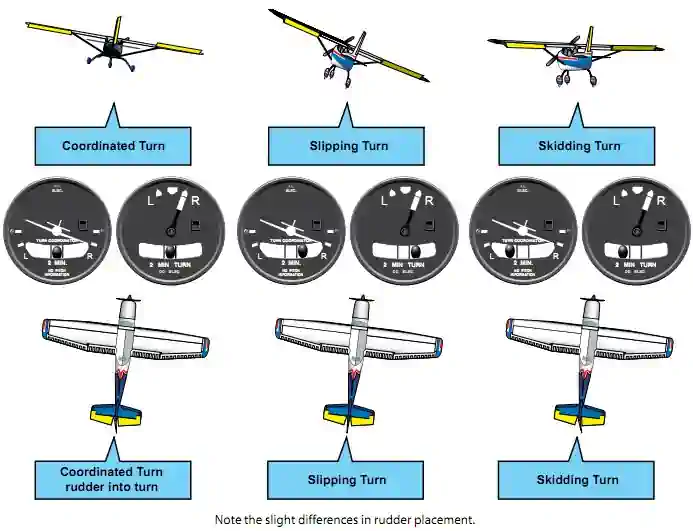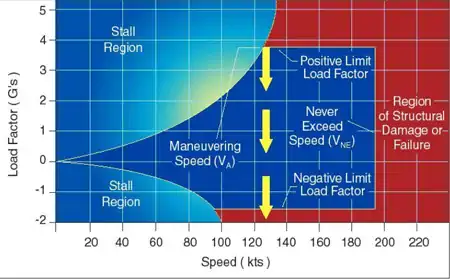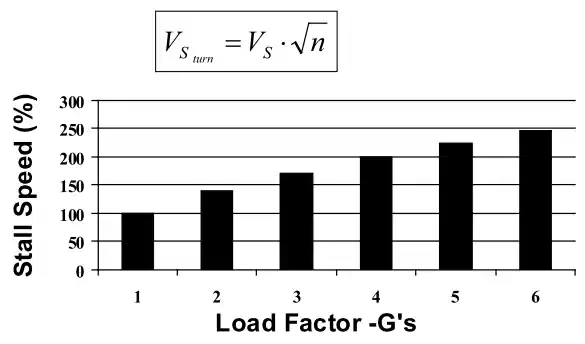Turn Performance
When an aircraft banks, the resultant lift splits between a vertical and horizontal component, providing the horizontal forces necessary to turn.
Introduction Turn Performance
- When an aircraft banks, the resultant lift splits between a vertical and horizontal component, providing the horizontal forces necessary to turn.
- We call this turn performance.
- Lift is a key principle of flight, essential to flight and, therefore, turn performance.
- When an aircraft banks, the lift vector of the aircraft rotates with it, producing a vertical and horizontal component.
- The relationship between the aircraft's speed and bank angle determines the rate and radius of turns.
- The bank angle, in conjunction with aircraft speed, forms a relationship between the rate of turn and radius of turn.
- The equal and opposite reaction to this sideways force is centrifugal force, which is merely an apparent force as a result of inertia.
- Pilots endeavor to maintain coordination throughout turns to avoid slipping/skidding.
- Understanding the rate, radius, and performance in a turn makes aircraft performance while turning easier to comprehend.
- Pilots must be careful not to overanticipate or overcompensate, which can lead to overbanking in a turn.
- These principles are typically in reference to turns, but they are foundational to several maneuvers, including aerobatics.
Lift Review
- The principles of flight show us that lift occurs perpendicular to the relative wind.
- We usually think of this as an aircraft flying straight and level, producing lift in an upward direction.
- As an aircraft banks, however, the lift vector rotates with it, splitting into a vertical and horizontal component.
- Therefore, the resultant lift is a combination of the vertical and horizontal components. [Figure 1]
Rate and Radius of Turns
-
Rate of Turn:
- The rate depends on a set bank angle at a set speed. [Figure 2]
- The standard rate of turn is 3° per second.
-
Speed & Rate of Turn:
- If the aircraft increases speed without changing the bank angle, the rate of turn decreases.
- If the aircraft decreases speed without changing the bank angle, the rate of turn increases.
-
Bank Angle & Rate of Turn:
- If the aircraft's bank angle increases without changing its airspeed, the rate of turn also increases.
- If the aircraft's bank angle decreases without changing its airspeed, the rate of turn also decreases.
- Speed and bank angle, therefore, vary inversely to maintain a standard rate of turn.
- Speed and bank angles are critical in the instrument environment, like when holding or on an instrument approach.
- A rule of thumb for determining the standard rate turn is to divide the airspeed by ten and add 5.
- Example: an aircraft with an airspeed of 90 knots takes a bank angle of 16° to maintain a standard rate turn (90 ÷ by 10 + 5 = 14°).
-
Radius of Turn:
- The radius of turn varies with changes in either speed or bank. [Figure 2]
-
Speed & Radius of Turn:
- If the speed increases without changing the bank angle, the radius of turn increases.
- If the speed decreases without changing the bank angle, the radius of turn decreases.
-
Bank Angle & Radius of Turn:
- If the speed is constant, increasing the bank angle decreases the radius of turn.
- If the speed is constant, decreasing the bank angle increases the radius of turn.
- Therefore, intercepting a course at a higher speed requires more distance and, therefore, requires a longer lead.
- If the speed is slowed considerably in preparation for holding or an approach, a shorter lead is needed than that required for cruise flight.
Coordination Throughout Turns
- A slipping turn occurs when the aircraft does not turn at the rate appropriate to the bank, and it falls to the inside of the turn. [Figure 3]
- The aircraft is banked too much for the rate of turn, so the horizontal lift component exceeds the centrifugal force.
- A skidding turn results from an excess of centrifugal force over the horizontal lift component, pulling the aircraft toward the outside of the turn. [Figure 3]
- The rate of turn is too great for the angle of bank, so the horizontal lift component is less than the centrifugal force.
- The ball instrument indicates the quality of the turn and should be centered when banking.
- If the ball is off-center toward the turn, the aircraft is slipping, requiring increased rudder pressure on that side to increase the rate of turn.
- Also, reducing the bank angle without changing the rudder pressure will help coordinate the turn.
- If the ball is off-center on the side away from the turn, the aircraft is skidding, requiring rudder pressure on that side to be relaxed to decrease the rate of turn.
- Also, increasing the bank angle without changing the rudder pressure will help coordinate the turn.
- The ball should be centered when the wings are level; use rudder and/or aileron trim if available.
- The increase in induced drag (due to the angle of attack increase required to maintain altitude) results in a minor loss of airspeed if the power setting is not adjusted.
- Note that in a slip, the outside wing experiences slower movement through the air, resulting in a higher angle of attack to maintain lift.
- In the event of a stall, the aircraft will then roll to the outside wing (due to a higher angle of attack).
- The reverse is true for a slip, where the inside wing drops first due to the relatively slower movement through the air.
- Uncoordinated stalls risk turning into spins.
Aircraft Performance While Turning
-
Undesired Side Effects of a Turn:
- Adverse yaw (drag).
- Yaw against the direction of turn (lift).
- Diving tendency.
- Over-banking tendency.
- Increased stall speed.
-
Load Factor:
- Load factor is a measure of what is supported by the wings and is helpful in performance measurements, like a Vg diagram. [Figure 4]
- In level flight, the amount of vertical lift required must equal the weight of the aircraft.
- Note that the load factor required for a level turn is a function of bank angle (φ) only and is airspeed, weight, and altitude independent.
- Any force applied to an aircraft to deflect its flight from a straight line produces stress on its structure; the amount of this force is the load factor.
- A load factor is a ratio of the aerodynamic force on the aircraft to the gross weight of the aircraft (e.g., lift/weight).
- Example: A load factor of 3 means the total load on an aircraft's structure is three times its gross weight.
- When designing an aircraft, it is necessary to determine the highest expected load factors under various normal operations.
- These "highest" load factors are called "limit load factors."
- Manufacturers categorize aircraft (normal, utility, acrobatic, etc.) based on the load factors they must withstand.
- For safety reasons, aircraft design accounts for certain maximum load factors without incurring structural damage.
- In level flight in undisturbed air, the wings support not only the weight of the aircraft but also centrifugal force.
- As the bank steepens, the horizontal lift component increases, centrifugal force increases, and the load factor increases.
- If the load factor becomes so great that an increase in the angle of attack cannot provide enough lift to support the load, the wing stalls.
- Since the stall speed increases directly with the square root of the load factor, the pilot should be aware of the flight conditions during which the load factor can become critical.
- Steep turns at slow airspeed, structural ice accumulation, and vertical gusts in turbulent air can increase the load factor to a critical level.
-
Accelerated Stall Speed:
- As discussed above, the load factor does not mention stall speed. [Figure 5]
- We can't abruptly pull back on the stick or yoke, as this may cause the aircraft to enter an accelerated stall.
-
Overbanking in a Turn:
-
General Turn Performance:
- Making a level turn is relatively easy at mild bank angles; however, above a 60° angle of bank, the level turn equation becomes highly non-linear.
- Minor changes in the angle of bank require significant adjustments to the load factor to maintain a level turn.
- That's no problem if maintaining a level turn is the only task, but when the pilot becomes task-saturated, precise adjustment of bank angle and load factor may go out the window.
- High bank angles and low altitude can quickly become a deadly combination.
-
Overbank Acceleration:
- Over time, a vertical acceleration turns into a descent rate and altitude loss.
- Rather than trying to plot it three-dimensionally, it is easier to simplify the equation.
- If we represent two levels of pilot distraction with 5° and 10° of overbank.
- Example:
- A 2-g level turn requires a 60° bank angle.
- What happens if the aircraft is at 2-gs and 65° or 70° of bank angle instead of 60°? The plot below shows the 5° and 10° overbank cases at 1-g increments. Notice that a given bank angle error is more pronounced at high g-forces.
-
Overbank Vertical Speed and Altitude Loss:
- Over time, overbank acceleration causes a steady ramp-up of velocity.
- The distance traveled increases as a function of the square of time.
- Overbanking becomes much more dangerous than a constant rate of descent because the initial sink rate may go undetected.
- By the time the pilot detects the rapidly increasing VSI, the aircraft may already be in extremis.
- The pilot's last-ditch effort to avoid ground impact may lead to an accelerated stall departure.
-
Aerobatics
- All of the above applies to any plane.
- Example:
- As you make a loop, you lose airspeed in the vertical, so you need to ease your pull (increase radius), or you will fly an egg-shaped loop.
Turn Performance Conclusion
- The rate and radius of a turn are directly/indirectly related to the bank angle, respectively.
- The rate and radius of a turn are indirectly/directly related to the airspeed, respectively.
- Turn radius is proportional to the square of an aircraft's true airspeed.
- Also, the turn radius is proportional to the square of TAS.
- Whenever ailerons deflect, adverse yaw occurs.
- Still looking for something? Continue searching:




